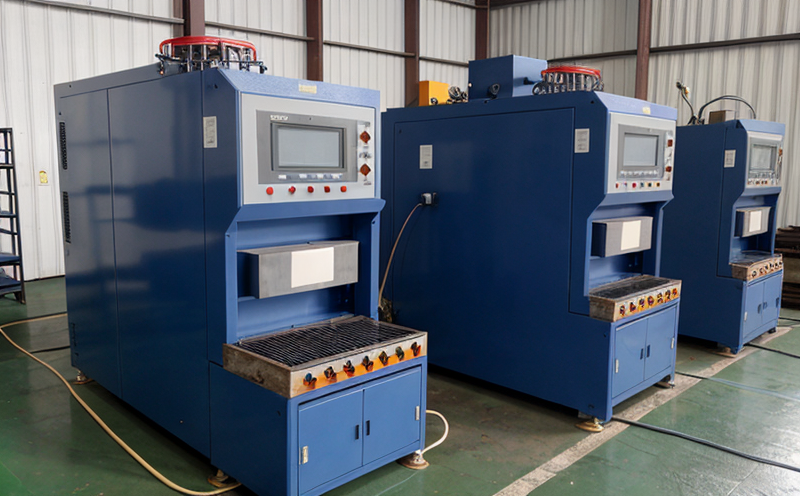JIS G1211 Iron and Steel Carbon Analysis Testing
The JIS G1211 standard is a critical benchmark in the field of material testing. This test measures carbon content in iron and steel, ensuring compliance with international quality standards for these materials. Carbon content is one of the most important factors that influence the mechanical properties and performance of metal components across various industries.
In industrial manufacturing, the accuracy of carbon analysis directly impacts product reliability and safety. For example, in automotive applications, precise control over carbon levels ensures that parts meet stringent durability requirements. Similarly, in construction materials, the correct carbon content is essential for ensuring structural integrity and longevity under varying environmental conditions.
The JIS G1211 method involves several steps to ensure reliable results. Specimens are first prepared according to specific guidelines provided in the standard. This includes cleaning the surface of the specimen to remove any contaminants that could affect the analysis. Once prepared, the samples undergo a precise combustion process where they are heated under controlled conditions.
The combustion process converts all organic carbon present into CO2 gas which is then measured accurately using sophisticated instrumentation such as infrared detectors or non-dispersive infrared analyzers. The accuracy of these instruments is crucial for obtaining reliable readings that can be used to determine the exact percentage of carbon within specified tolerances.
Compliance with JIS G1211 ensures that manufacturers produce high-quality products meeting international standards. This not only enhances product reputation but also facilitates easier entry into global markets where conformity to such specifications is required by regulatory bodies or customers.
In practice, this testing method plays a vital role in research and development activities aimed at improving the performance of new materials or optimizing existing processes. By accurately measuring carbon content during R&D phases, engineers can identify optimal compositions leading to better-performing alloys tailored for specific applications.
Moreover, this test supports procurement strategies by helping companies select suppliers who adhere strictly to specified material specifications. When raw materials consistently meet the required standards as defined in JIS G1211, it reduces risks associated with substandard components entering supply chains and ultimately improves overall product quality.
The importance of carbon analysis cannot be overstated given its impact on numerous industries ranging from automotive manufacturing to construction projects. It is an integral part of ensuring that iron and steel used in these sectors meet the highest standards of performance, durability, and safety.
Applied Standards
The JIS G1211 standard specifies procedures for determining the carbon content of cast irons, wrought irons, and steels. It provides detailed instructions on how to prepare specimens, perform combustion tests, and interpret results accurately.
Compliance with this standard is essential not only within Japan but also internationally as it sets global benchmarks for quality assurance in iron and steel production processes. Many countries recognize JIS G1211 due to its rigorous methodology and reliability which makes it a preferred choice among manufacturers worldwide.
In addition to JIS G1211, other relevant standards include ASTM E547 (United States), EN 10008-1 (European Union), and ISO 9693 (International Organization for Standardization). While each document may have slight variations in specific procedures or terminology, they all aim to provide accurate methods for measuring carbon content ensuring consistent results across different regions.
Why Choose This Test
Selecting JIS G1211 iron and steel carbon analysis testing offers numerous benefits beyond mere compliance with international standards. One key advantage lies in its ability to provide precise measurements of carbon content, which is crucial for maintaining consistent product quality throughout production processes.
For quality managers responsible for overseeing manufacturing operations, this test provides valuable insights into potential variations within batches or between suppliers. By identifying outliers early on through detailed analysis, they can take corrective actions promptly before issues escalate into larger problems affecting final products.
Compliance officers benefit greatly from consistent application of JIS G1211 as it reduces the risk of non-compliance penalties and enhances corporate reputation by demonstrating commitment to high standards. Moreover, this testing method supports internal audits by providing clear documentation that meets regulatory requirements.
R&D engineers find value in using JIS G1211 during innovation cycles where exploring new alloys requires accurate data on carbon content. This information aids in developing tailored solutions meeting specific performance criteria essential for advanced applications like aerospace or medical devices.
For procurement teams, selecting suppliers based on adherence to JIS G1211 ensures that only reliable sources supply raw materials. This reduces the likelihood of receiving substandard components that could compromise product integrity and lead to costly recalls downstream in the supply chain.
International Acceptance and Recognition
The acceptance and recognition of JIS G1211 extend far beyond Japan, making it a widely respected standard globally. Many leading manufacturers across various sectors rely on this test method to ensure their products meet the highest quality standards.
In the United States, several states have adopted JIS G1211 as part of their certification programs for iron and steel products. Similarly, European Union countries recognize its importance in maintaining consistent product performance among member nations. Additionally, ISO has acknowledged this standard’s contribution towards global harmonization efforts aimed at improving overall industrial practices.
Companies operating internationally appreciate the consistency provided by JIS G1211 as it allows them to maintain uniform quality standards regardless of location. This facilitates smoother operations when exporting goods or establishing facilities in different regions while ensuring that all parties involved understand and adhere to the same specifications.
The widespread adoption of JIS G1211 underscores its significance not only within specific industries but also as a tool promoting international cooperation and shared excellence in materials science.





